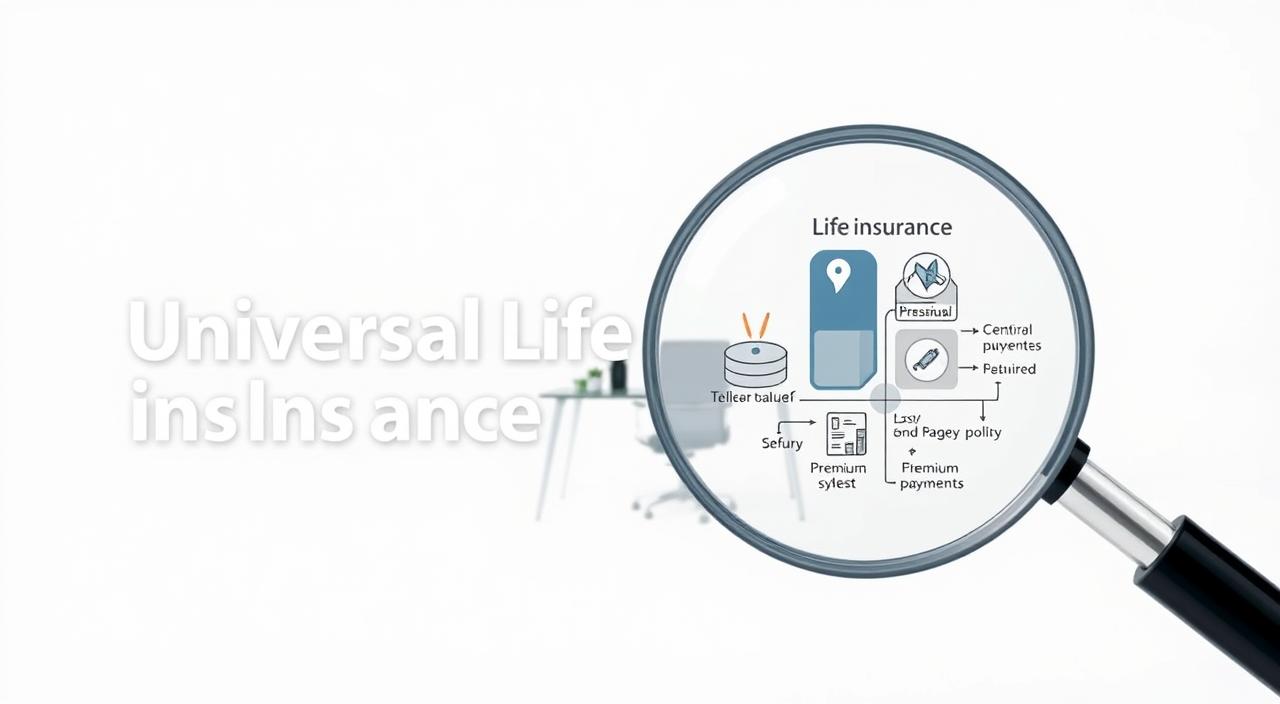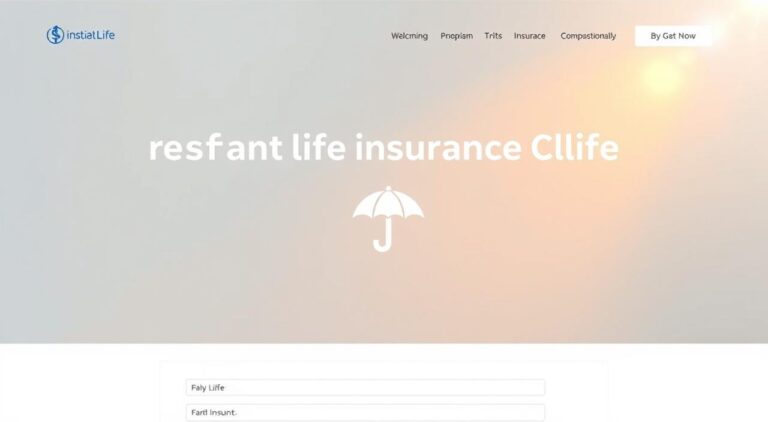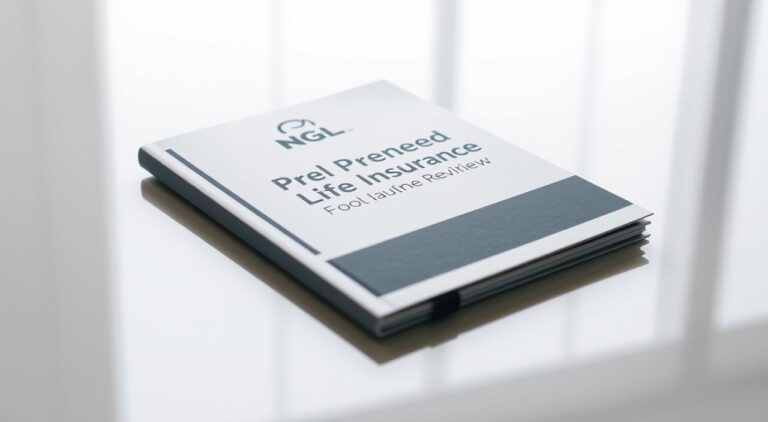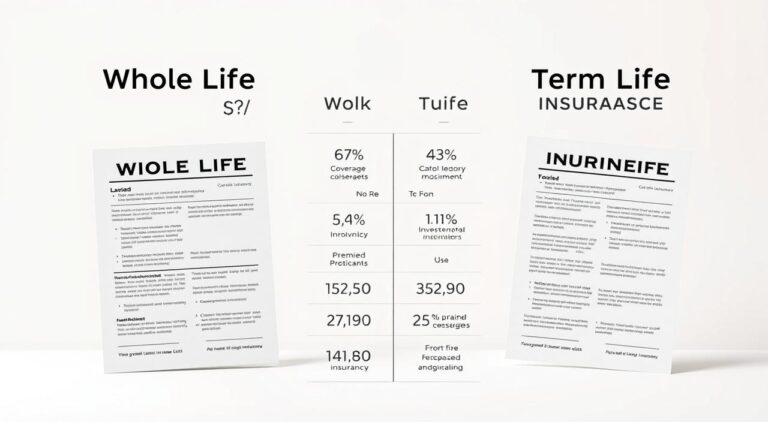How Universal Life Insurance Works: Pros and Cons Explained
Choosing the right life insurance policy can be challenging. One option stands out for its flexibility: universal life insurance. Unlike term or whole life coverage, this policy blends a death benefit with a cash value component that grows over time.
This article breaks down how these policies function, their benefits, and potential drawbacks. We’ll compare them to other types of coverage and highlight key factors like fees and market risks. Understanding these details helps you make an informed decision.
Key Takeaways
- Combines lifelong coverage with a savings element.
- Offers adjustable premiums and death benefits.
- Cash value grows based on interest rates or market performance.
- Higher fees compared to term policies.
- Market risks may affect policy stability.
What Is Universal Life Insurance?
When exploring permanent coverage options, many consider universal life insurance for its adaptable features. This policy blends a death benefit with a cash value account, offering lifelong protection while building savings over time.
Definition and Key Features
Premiums are split into two parts: a portion covers insurance costs, and the rest fuels the cash value. Unlike rigid plans, you can adjust payments or coverage amounts as needs change. However, growth depends on interest rates, and fees may reduce returns.
How It Differs from Whole and Term Life
Whole life insurance guarantees fixed premiums and steady cash growth, but lacks flexibility. Term life, meanwhile, offers affordable, temporary coverage with no savings component. Universal life strikes a balance—though market risks and fees require careful evaluation.
Note: Beneficiaries receive only the death benefit; the cash value remains with the insurer unless withdrawn during the policyholder’s lifetime.
How Universal Life Insurance Works
Flexible payments and savings growth define this unique financial product. Policyholders benefit from adjustable premiums and a built-in savings component, but understanding the fine print is crucial.
Premium Flexibility and Cash Value
Every payment splits into two parts. The minimum covers the death benefit and fees, while excess funds fuel the cash value. This savings portion grows over time, offering a safety net for future needs.
Need to skip a payment? The cash value can cover it temporarily. However, consistently underpaying risks policy lapse. Unlike term plans, this flexibility comes with higher costs.
The Role of Interest Rates and Fees
Growth hinges on interest rates, which vary by market conditions. Insurers often credit earnings monthly, but fees—like mortality charges and admin costs—chip away at returns.
For example, a 5% return might net just 3% after fees. Over decades, this difference compounds significantly. Compare this to term life insurance, where payments buy pure protection without savings complexities.
Tip: Review annual statements to track fee impacts and adjust premiums accordingly.
Pros and Cons of Universal Life Insurance
Weighing the benefits and drawbacks helps determine if this policy fits your financial goals. While its adaptable features appeal to many, hidden costs and risks demand careful scrutiny.
Advantages: Flexibility and Growth Potential
Flexibility stands out as a top perk. You can adjust premiums or death benefits as your needs change. Over time, the cash value growth component builds savings, often with tax-deferred gains.
Unlike term policies, this coverage lasts a lifetime. Beneficiaries receive the full death benefit, providing long-term security. “For those seeking control, it’s a powerful tool,” notes Aflac.
Disadvantages: Costs and Risks
High fees erode returns. Mortality charges, admin costs, and surrender fees can slash growth. Market-linked returns add uncertainty—what’s projected today may fall short tomorrow.
“Universal life often underperforms term coverage paired with separate investments,” warns Ramsey. “It’s like paying for a 10-minute guitar lesson but only getting 5 minutes.”
Skipped payments shrink the cash value, risking policy lapse. Worse, beneficiaries forfeit the savings portion—only the death benefit is paid out.
Types of Universal Life Insurance Policies
Not all universal life policies work the same way—each type offers unique features. Whether you prioritize stability, market-linked gains, or investment control, understanding these options ensures better alignment with your goals.

Guaranteed Universal Life (GUL)
Guaranteed universal life focuses on predictability. Premiums stay fixed, and the death benefit is secure, but the cash value grows minimally. Aflac notes this suits those who prioritize lifelong coverage over wealth-building.
- Stable premiums with no market exposure.
- Limited cash value growth—best for pure protection.
- Lower fees compared to other types.
Indexed Universal Life (IUL)
Indexed universal life ties cash value growth to a market index (e.g., S&P 500). Returns are capped, shielding you from downturns but limiting upside. Ramsey warns: “Fees eat into gains—what’s advertised isn’t always what you net.”
- Growth potential with interest rate caps.
- Fees reduce actual returns over time.
- Balances safety and moderate growth.
Variable Universal Life (VUL)
Variable universal life lets you invest the cash value in sub-accounts (like mutual funds). High risk, high reward—but Aflac cautions against unpredictable fees and market swings.
- Direct market participation amplifies gains/losses.
- Fund management fees erode profits.
- Requires active monitoring.
“All universal life policies underperform term coverage paired with disciplined investing,” says Ramsey. “Complexity rarely equals better value.”
Universal Life Insurance vs. Other Policies
Comparing different policies helps clarify which fits your financial strategy. Each type offers unique trade-offs in cost, flexibility, and long-term value. Below, we contrast universal life with term and whole life options.
Term Life Insurance: Cost and Simplicity
Term life insurance provides affordable coverage for a set period, like 10-30 years. Ramsey notes it’s 6-10x cheaper than permanent policies. Unlike universal life, it has no cash value—pure protection at lower premiums.
This suits temporary needs, such as covering a mortgage or college costs. “Buy term and invest the rest,” advises Ramsey, highlighting its role in a self-insurance strategy.
Whole Life Insurance: Stability vs. Flexibility
Whole life insurance guarantees fixed premiums and steady, slow cash value growth. Aflac calls it predictable but costly—lacking universal life’s adjustable features.
For those prioritizing stability over growth potential, whole life works. However, universal life’s adaptability often appeals to dynamic financial plans.
Key takeaway: Term excels in affordability; whole life offers consistency. Universal life bridges gaps but requires active management.
Cost Factors of Universal Life Insurance
Understanding the cost structure is key to evaluating this financial product. What appears as a single premium payment actually splits into multiple components, each affecting long-term value differently.

Premium Breakdown: Insurance Costs vs. Savings
Only 30-40% of your payment builds cash value. The rest covers insurance costs like mortality risk and agent commissions. Ramsey notes this fee-heavy allocation “stunts growth like practicing guitar with half the strings missing.”
For example, a $300 monthly payment might allocate:
- $180 to fees and death benefit coverage
- $120 to the savings component
Hidden Fees and Surrender Charges
Many overlook administrative fees that compound annually. Aflac warns early termination triggers surrender charges—up to 10% of the cash value if canceled within 10-15 years.
Unlike term policy transparency, these costs aren’t always upfront. Loan interest on borrowed funds adds another layer—often higher than standard rates.
“Universal life buyers pay for complexity,” says Ramsey. “That flexibility comes at a steep price most don’t calculate.”
Is Universal Life Insurance Right for You?
High earners and estate planners often benefit most from this coverage. Its flexibility and tax advantages cater to specific financial goals, but the policy isn’t a one-size-fits-all solution.
Who Benefits Most from This Policy?
Life insurance experts like Aflac recommend it for high-net-worth individuals. The cash value growth offers tax-deferred savings, ideal for estate planning or supplementing retirement income.
Key candidates include:
- Those needing lifelong coverage with adjustable premiums.
- Investors seeking tax-advantaged growth beyond traditional options.
- Families with complex financial portfolios.
When to Consider Alternatives
Ramsey Solutions advises term life insurance for 95% of buyers. “Pair affordable policy with disciplined investing,” they suggest. Universal life’s fees and complexity often outweigh benefits for budget-conscious households.
Alternatives make sense if you:
- Prioritize low-cost protection over savings components.
- Lack the income to consistently fund higher premiums.
- Prefer simpler, transparent coverage.
“Universal life suits a niche audience—most families get better value from term policies and separate investments.”
Conclusion
Universal life insurance offers adjustable premiums and potential cash value growth, but high fees can erode benefits. Financial experts like Dave Ramsey suggest pairing term life insurance with separate investments for better long-term results.
Before committing, compare policies using trusted tools like Zander Insurance. The pros of flexibility often come with hidden cons, making this product better suited for high-net-worth individuals than average buyers.
Remember: Insurers frequently profit more from these policies than policyholders. Always weigh costs against your financial goals before choosing coverage.
FAQ
What makes universal life different from whole or term policies?
It offers adjustable premiums and a cash value component tied to interest rates, unlike fixed whole life or temporary term coverage.
Can I borrow against the cash value of my policy?
Yes, loans are permitted, but unpaid balances reduce the death benefit and may trigger tax consequences.
How do interest rates affect my cash value growth?
Higher rates boost accumulation, while lower returns may require larger premium payments to maintain coverage.
What happens if I stop paying premiums?
The cash value may cover costs temporarily, but prolonged non-payment could cause the policy to lapse.
Are there tax advantages with this type of coverage?
Cash value grows tax-deferred, and beneficiaries typically receive death benefits income-tax-free.
Which type is best for guaranteed lifelong protection?
Guaranteed Universal Life (GUL) offers fixed premiums and avoids market risks for stable long-term coverage.
Why do some policies have higher fees than others?
Variable and indexed versions include investment management charges, while all types have administrative costs.
When should someone choose term instead?
Those needing affordable temporary coverage without cash value benefits may prefer term policies.






